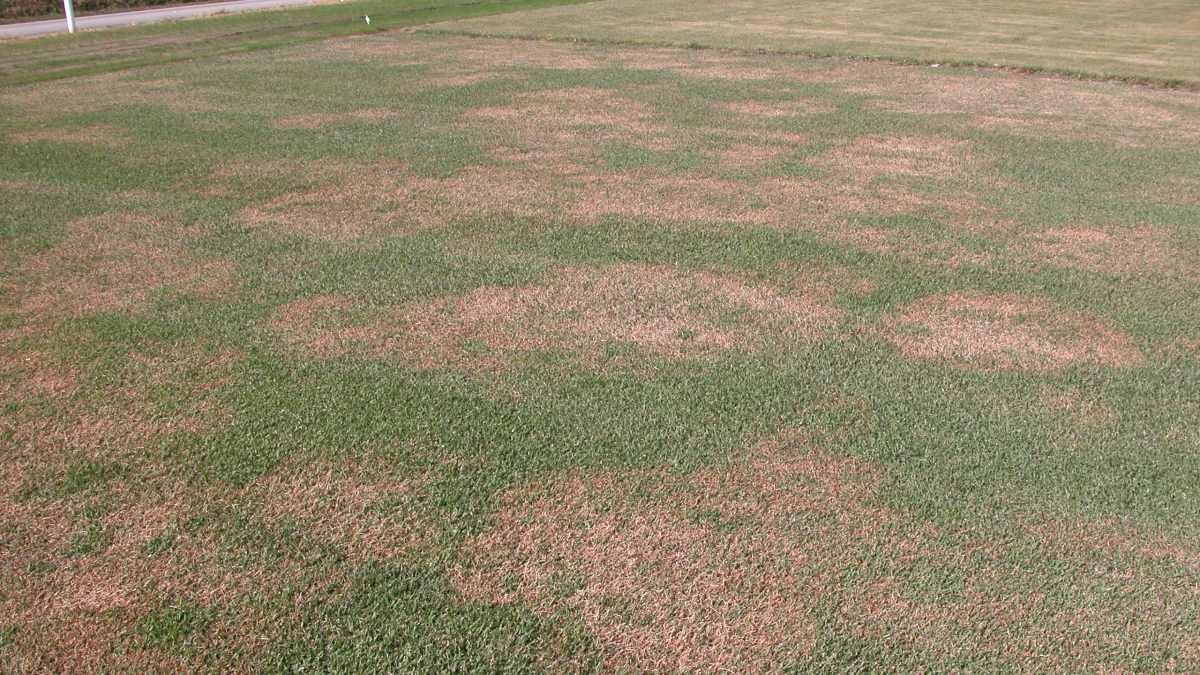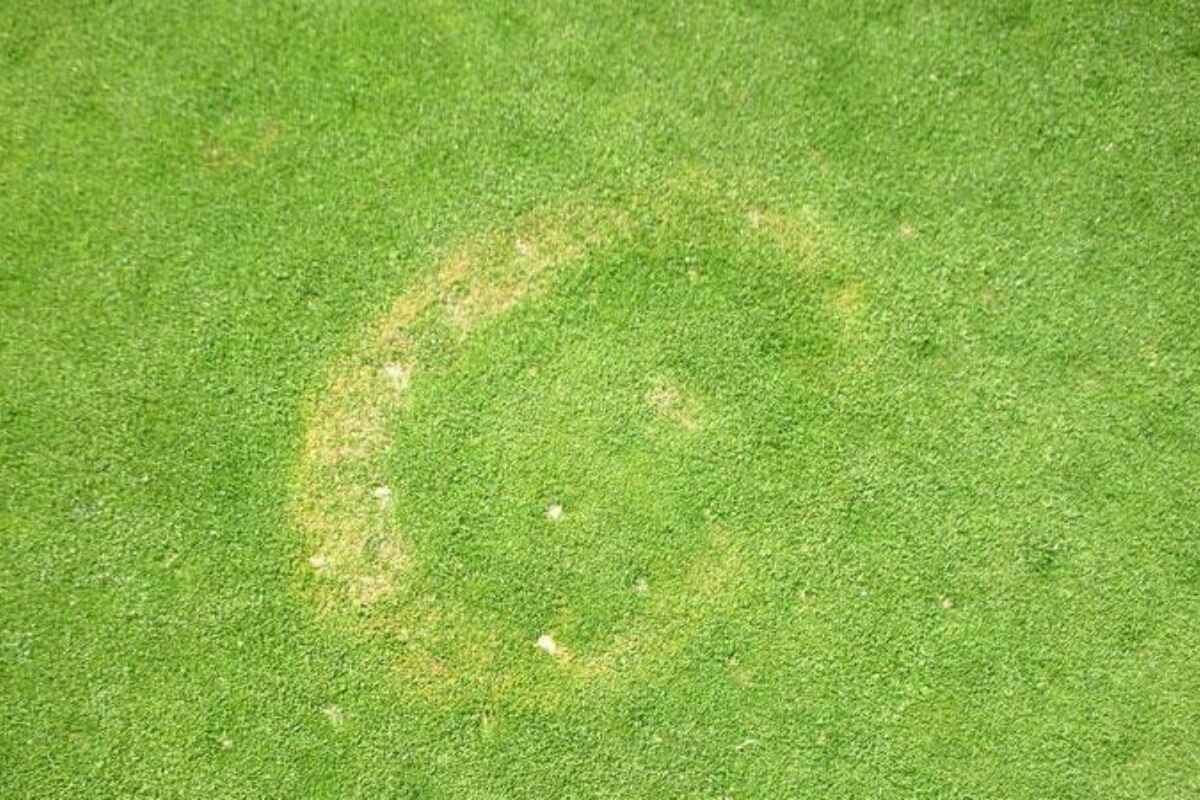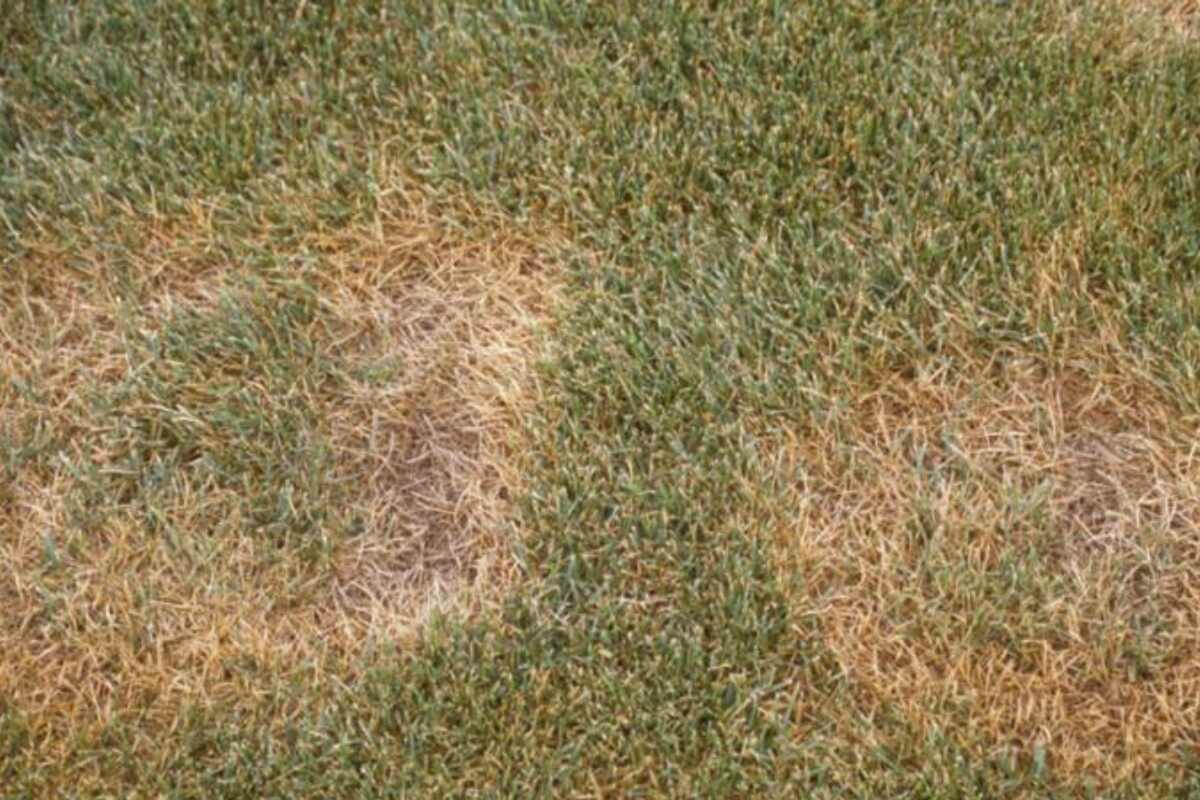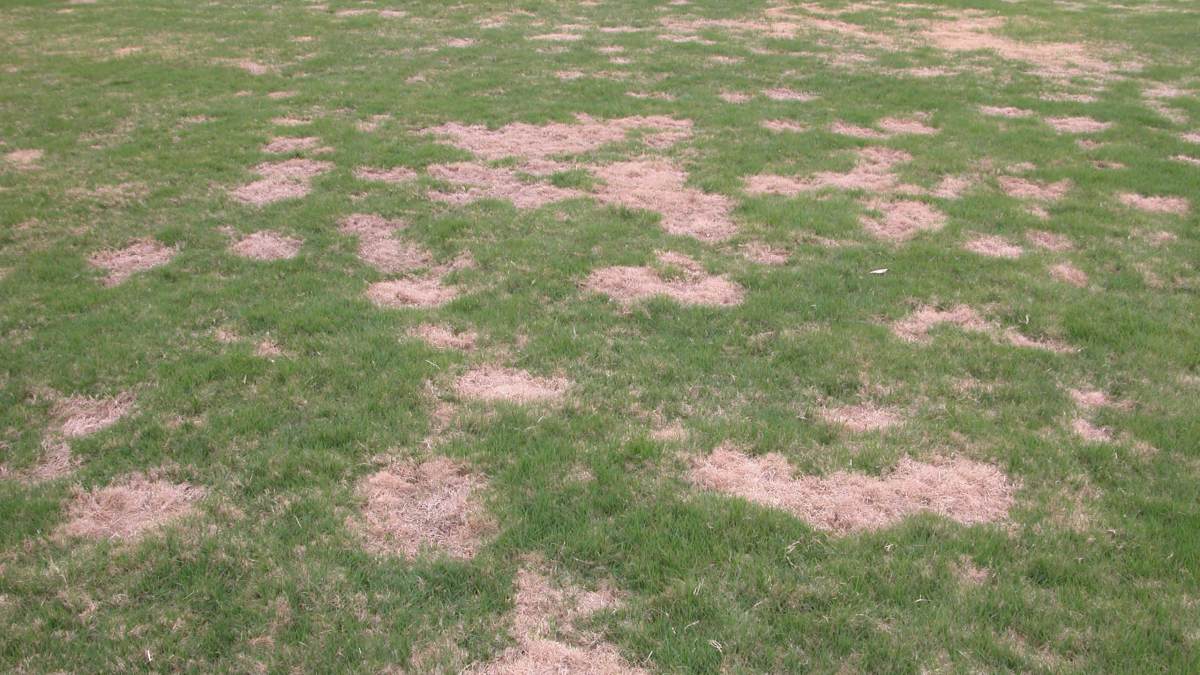
One of the joys of spring is seeing everything outdoors come back to life and green up—your lawn included. However, if you’re seeing dead circular spots in your Bermudagrass instead of a lush, green lawn, chances are you’re dealing with spring dead spot lawn disease. This infection makes your grass more susceptible to winterkill, so symptoms appear in the spring when your lawn comes out of winter dormancy.
Spring dead spot looks similar to other common lawn problems, so let’s talk about how to identify it, as well as control and prevention measures.
What is Spring Dead Spot?
Spring dead spot (SDS) is a fungal disease caused by Ophiosphaerella herpotricha and Ophiosphaerella korrae. It is commonly seen in Bermudagrass lawns across the South subjected to freezing temperatures. The infection doesn’t cause disease symptoms but makes the grass susceptible to winter injury, which ultimately causes the symptoms.
Spring dead spot appears in the spring as bleached-out circular patches in your lawn. These patches eventually die and can occur each year if left untreated.
How to Identify Spring Dead Spot in Your Lawn
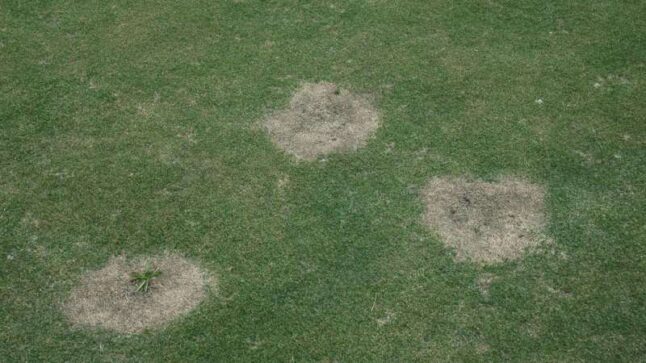
There are a few things that I’m adamant about, and one of them is figuring out what the problem in your lawn is before you try treating it. Knowing the infection is crucial so you can use the proper fungicide and not apply unneeded products.
The primary symptom of spring dead spot (SDS) is well-defined, bleached-out circular patches of dead grass in the lawn. These patches appear most prominently in the spring as the turfgrass is greening up after winter. They range from 6 inches to several feet in diameter and may grow in size each year if left untreated.
Upon closer inspection, you may see dark sunken lesions on the crown, roots, stolons, and rhizomes of grass blades. As the disease progresses and these areas rot, the grass parts may become black and brittle. The patches will eventually die and collapse down to the soil surface.
It’s also not uncommon to see weeds colonizing the weakened or dead patches of grass after infection.
I do understand, though, that identifying a turfgrass disease isn’t always easy. If unsure, head over to our article covering all the most common lawn diseases. It might help you identify the one in your grass, whether it’s spring dead spot or something else.
Can You Control Spring Dead Spot?
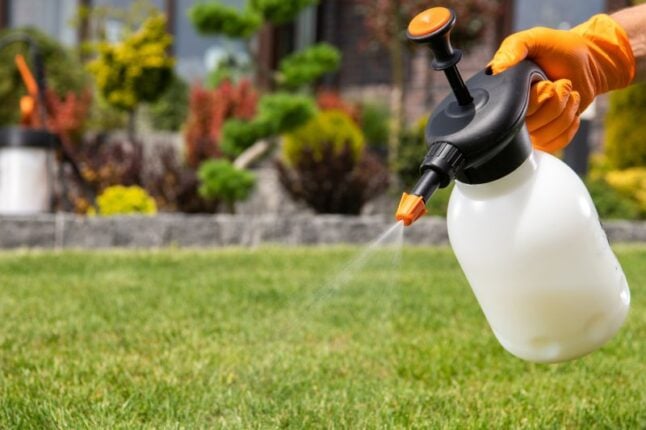
Unfortunately, dead spot management is difficult once SDS establishes itself in a Bermuda lawn. Control of spring dead spot with fungicides isn’t impossible, but it’s certainly challenging.
To see improvement, you may need to repeat fungicide applications at the highest label rates in severely affected areas.
You’ll see the best results when you combine cultural control methods and preventative fungicide applications.
Start applying preventative fungicides in the fall, about one month before the lawn goes dormant, when soil temperatures are 60 to 80°F. Plan to treat the yard with three fall applications:
- The first around October 1st
- The second in the middle of October
- The last at the end of October
Apply the product with a large volume of water—5 gallons per 1,000 square feet—to move the fungicide down into the root zone. Or, water your lawn immediately after application, giving it at least ⅛ inch of water.
Recommended fungicides for SDS chemical control include:
- Propiconazole
- Azoxystrobin
- Myclobutanil
- Thiophanate Methyl
Best Cultural Practices to Prevent Spring Dead Spot
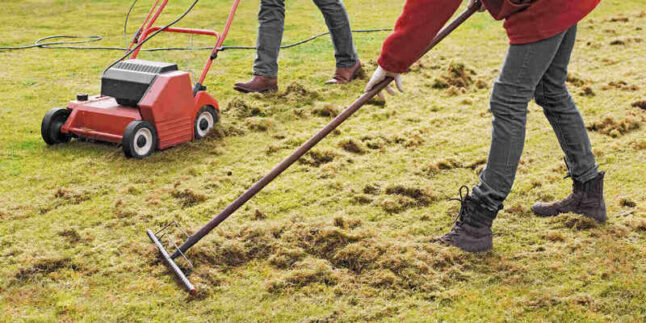
As with any other lawn disease, the best way to prevent spring dead spot is to avoid it by maintaining a healthy lawn. These cultural practices can prevent the conditions that cause spring dead spot:
- Water the lawn frequently yet thoroughly. It’s ideal to water it once a week when it’s cooler in the spring and fall and twice a week during the summer, giving it 1 to 1.5 inches of water per week.
- Water in the early morning instead of in the evening.
- Keep the soil pH slightly acidic, ideally between 5.8 and 6.2—high soil pH tends to increase disease incidence. You can use nitrogen sources like ammonium sulfate to lower soil pH.
- Dethatch the lawn each growing season in the spring to reduce thatch accumulation. Excessive thatch increases disease susceptibility and decreases cold hardiness, making your Bermudagrass more prone to winter kill once infected. Learn more about lawn dethatching.
- Core aerate severely affected patches at least three times during the summer when Bermudagrass grows the most. Lawn aeration helps reduce soil compaction and improves soil drainage.
- Avoid overfertilizing, especially with nitrogen. Fertilize to meet the turf’s nutritional needs, using soil test results to determine nitrogen rates. Don’t apply nitrogen fertilizers within six weeks of winter dormancy, and never spread more than 1 pound of nitrogen per 1,000 square feet in a single application.
- Maintain adequate soil potassium (K) levels, applying fertilizer with a high K percentage in the fall to foster winter hardiness.
- Opt for turfgrass varieties with better SDS resistance, or choose more cold-tolerant ones. These cultivars experience less winter kill, which SDS exacerbates.
Causes of Spring Dead Spot
Circumstances that encourage the development of spring dead spot include:
- Moist fall conditions
- Soil temperature between 50°F and 70°F
- Cold, wet winters
- Thick thatch
- Low mowing heights
- Excessive nitrogen
- Potassium deficiency
- Poor soil drainage
- Over-irrigation
Disease Life Cycle & Spread
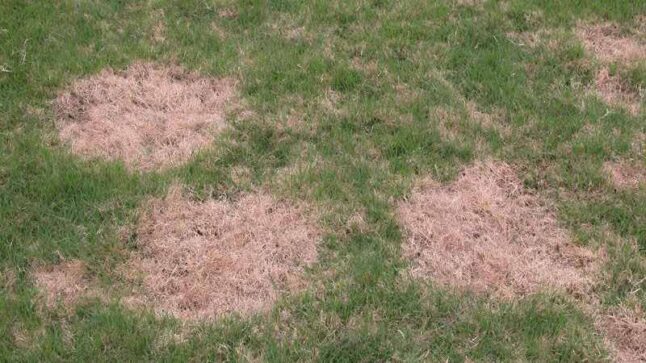
The spring dead spot pathogen survives in the layer of debris that sits on your lawn’s soil surface. This debris often consists of the grass’s dead roots, stolons, and rhizomes.
It occurs as fungal threads and sclerotia, small dark masses of hardened mycelium containing food reserves. These sclerotia can remain dormant for a long time, so SDS may take a while to appear.
Spring dead spot spreads when the O. herpotricha or O. korrae sclerotia are moved via infected sod, debris, and soil. Dead spot symptoms appear the following spring after infection.
Grasses Susceptible to Spring Dead Spot
SDS is commonly seen in established Bermudagrass lawns and rarely in other warm-season turfgrasses like Zoysiagrass or buffalograss. Intensely managed home lawns, athletic fields, and golf courses are more susceptible, and it’s not typically seen for the first 3 to 5 years after planting.
It never occurs in the cool-season grasses grown in the North.
FAQ About Spring Dead Spot
What is the best fungicide for spring dead spot?
The best lawn fungicides for spring dead spot are those with the active ingredients propiconazole, azoxystrobin, myclobutanil, or thiophanate methyl. Popular, widely available products include:
- BioAdvanced Fungus Control for Lawns, Ready-to-Spray, 32 oz
- Spectracide Immunox Multi-Purpose Fungicide Spray Concentrate
- Atticus Artavia 2SC Azoxystrobin 22.9% Fungicide (16oz)
What is the causal agent of spring dead spot?
Species of fungi from the Ophiosphaerella family cause spring dead spot in lawns. These fungi lurk in organic debris, such as lawn thatch and fallen leaves.
When is it too late to apply fungicide?
When you start seeing symptoms of spring dead spot, the fungus has already been infecting your lawn for a few months, and it might be too late to control it with fungicides. The best time to apply preventive fungicides for spring dead spot is in October when soil temperatures are 60 to 80°F.
How a Lawn Care Pro Can Help With Spring Dead Spot
Lawn diseases are stubborn and difficult to remove once they take root in your grass. It takes time and often more than one treatment to eliminate an infection. If you’re a homeowner struggling with spring dead spot infection and need help caring for your lawn, contact a lawn treatment pro through LawnStarter today.
Through our convenient online platform or mobile app, we’ll put you in touch with a local, highly qualified lawn professional who can help with spring dead spot prevention and treatment, along with other lawn care services, such as mowing, fertilization, and weed control.
Main Photo Credit: NC State Cooperative Extension

